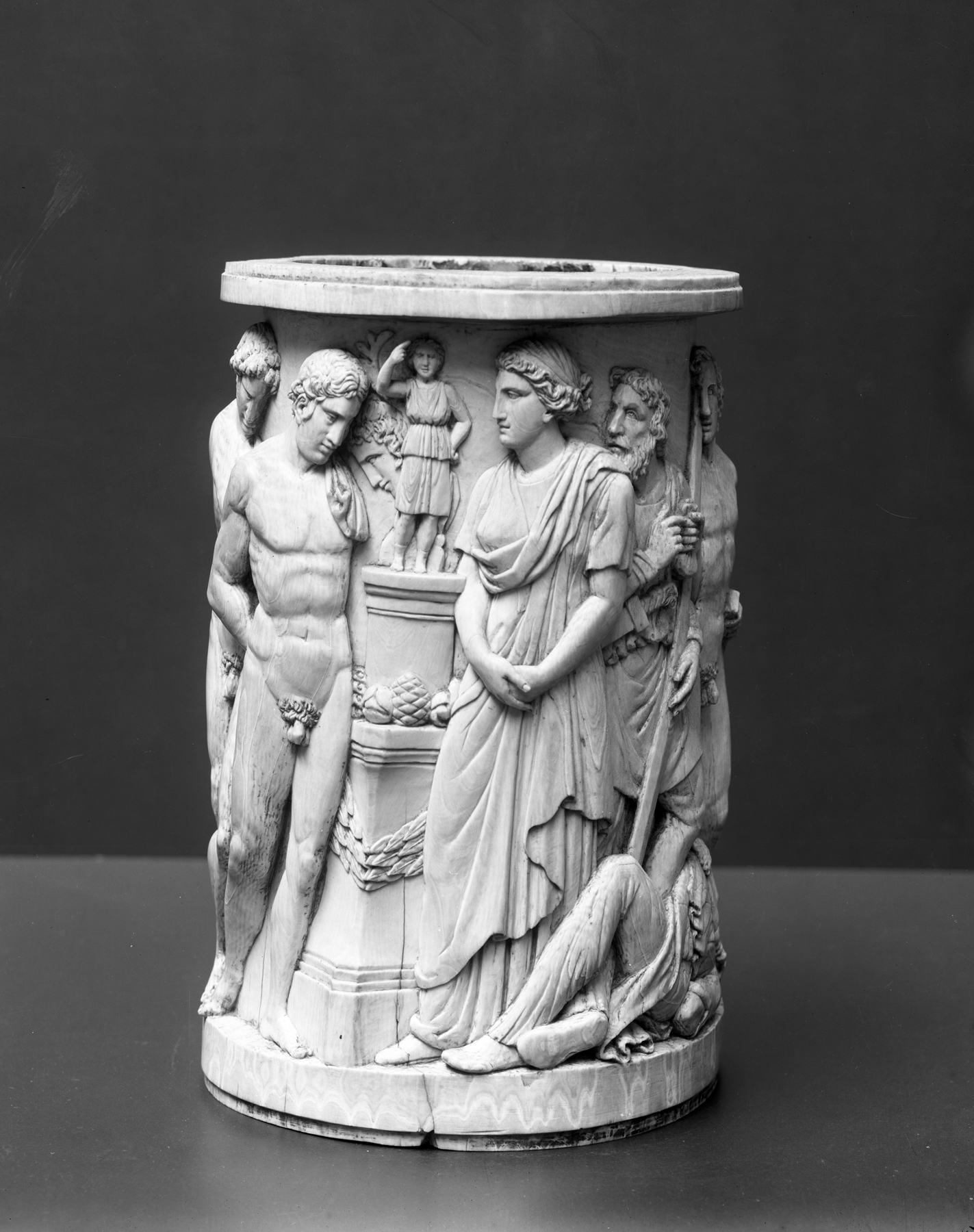Orestes and Pylades with Iphigenia in Tauris
Ten figures in various poses cover almost the entire vertical surface of the tankard. They are carved in deep relief, replicating a Roman sarcophagus probably acquired by Domenico Grimani in Rome and installed in the Grimani Palace at Santa Maria Formosa, Venice, during the first half of the 16th century. The sarcophagus, now in the Schlossmuseum, Weimar, depicts scenes from Euripides' "Iphigenia in Tauris." In the narrative shown on the sarcophagus, Orestes and his companion Pylades, their arms bound, have been brought to the temple of Artemis where they encounter the priestess, who stands to the right of the altar. The discovery of her identity as Orestes' sister, Iphigenia, is depicted in the scene on the left. The scene on the right represents the struggle to escape from Tauris.
While copying the central episode, the Neoclassical carver has modified other elements of the composition, distorting the narrative and inventing details to fill lacunae on the left and right. Orestes points into the urn at his feet and the nude figure with a scabbard is shown holding a small bag rather than a sword, as had been intended by the Roman sculptor. The scene on the extreme right of the sarcophagus, in which Orestes assists Iphigenia into his galley, does not appear in the ivory.
The story of Iphigenia enjoyed a revival among Neoclassical artists. At this time, the Weimar sarcophagus was described by A. L. Millin, from whom it was acquired by archduke Carl Alexander von Sachsen-Weimar during his Italian sojourn of 1834-1835. Its Italian provenance suggests that the tankard was probably carved in Italy; the deep relief-carving suggests that it was modeled on the sarcophagus itself rather than on one of the linear engravings published by Millin or Sanquirico. The tankard was sold in 1880 as a 16th-century work. Its cover, feet, and handle are missing.
Provenance
Provenance (from the French provenir, 'to come from/forth') is the chronology of the ownership, custody, or location of a historical object. Learn more about provenance at the Walters.
Count Girolamo Possenti Collection, Fabriano [date and mode of acquisition unknown]; Sale, Raphael Dura, Florence, April 1, 1880, lot 125 [illustration is misnumbered as 124]; F. Ongania, Venice [date and mode of acquisition unknown]; Henry Walters, Baltimore [date of acquisition unknown], by purchase; Walters Art Museum, 1931, by bequest.
Geographies
Italy (Place of Origin)
Measurements
H: 7 1/2 x Diam: 4 5/8 in. (19 x 11.7 cm)
Credit Line
Acquired by Henry Walters
Location in Museum
Not on view
Accession Number
In libraries, galleries, museums, and archives, an accession number is a unique identifier assigned to each object in the collection.
In libraries, galleries, museums, and archives, an accession number is a unique identifier assigned to each object in the collection.
71.348


